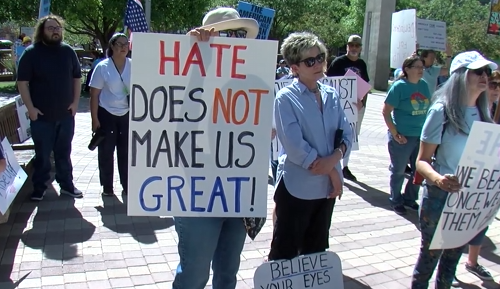The Supreme Court is stepping into another Obamacare case. Here’s what that means

The future of the nation’s health care system now lies in the hands of the Supreme Court.
The justices announced Monday that they will determine the fate of the Affordable Care Act next term, after lower court rulings found the law’s individual mandate unconstitutional. The justices’ ruling could uphold, eradicate or greatly change the landmark law that has transformed America’s health system in many ways.
Just how much of the law could remain in place is a question the justices now must decide. It remains in effect while the case works its way through the legal system.
A US District Court judge in Texas ruled in 2018 that the individual mandate was unconstitutional because Congress reduced the penalty for remaining uninsured to zero and, therefore, the entire law must fall. A federal appeals court in December agreed that the mandate was unconstitutional, but punted the decision on what, if any, of the law’s provisions could be retained back to the lower court.
Meanwhile, the Trump administration has recently argued that the entire law should not be invalidated nationwide, reversing a previous stance.
What the Affordable Care Act does
Obamacare has extended coverage to millions of Americans, many of whom were uninsured beforehand. More than 10 million people were enrolled in Obamacare plans, as of mid-2019, while nearly 12.7 million low-income adults have gained coverage through Medicaid expansion, as of fiscal 2017.
The uninsured rate for non-elderly Americans plummeted from 18.2% at the time of the law’s passage in 2010 to a low of 10.4% in 2016, according to the most recent data from the Centers for Disease Control and Prevention’s National Health Interview Survey. The overall share of uninsured Americans ticked up in 2018 for the first time in nearly a decade, according to Census Bureau data.
But the Affordable Care Act, which is approaching its 10-year anniversary later this month, has done far more than reduce the uninsured rate.
Among its most popular provisions are allowing young adults up to age 26 to stay on their parents’ policies and protecting those with pre-existing conditions. Prior to the Affordable Care Act, Americans trying to buy insurance on their own could be turned away or charged more based on their medical histories. In addition, insurers must provide comprehensive benefits on the Obamacare exchanges.
In fact, Obamacare has affected nearly all Americans, many of whom aren’t aware of the law’s impact. It saves senior citizens money on their Medicare coverage and prescription drugs. It lets many people obtain free birth control, annual physicals, mammograms and cholesterol tests. It requires many chain restaurants to post the calorie counts of their menu items.
Millions are still uninsured
While the Supreme Court has upheld the law in the past, it also made a major change to a key provision that has left millions of Americans uninsured, experts say. In 2012, the justices ruled the federal government could not threaten to remove existing Medicaid funding from states that don’t agree to broaden Medicaid to low-income adults, essentially making expansion optional.
To date, 36 states, plus the District of Columbia, have expanded Medicaid to adults who have incomes up to 138% of the poverty guideline, or about $17,600 for an individual in 2020. Many Republican-led states continue to refuse to expand, although voters in several red states have forced their elected officials to broaden coverage through ballot measures. Consumer advocates are working to do the same in Missouri and Oklahoma this year.
About 2.3 million low-income Americans in the 14 states that haven’t expanded are in this coverage gap, according to the Kaiser Family Foundation. A third of them live in Texas, which is spearheading the effort to overturn the law.

